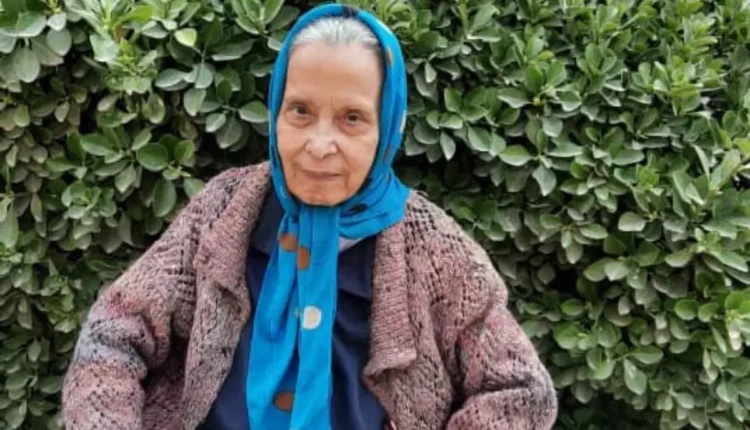In the history of Iran’s academic and scientific community, few names shine as brightly as Mahbanoo Tata. Known as the “Mother of Statistics in Iran,” Mahbanoo Tata’s story is one of resilience, brilliance, and an unwavering commitment to education. From her early beginnings in India to her extraordinary contributions to Iran’s academic institutions, Tata exemplified dedication and vision, paving the way for future statisticians and mathematicians.
Mahbanoo Tata was born on April 26, 1942, in Bombay (now Mumbai), India. She belonged to a Zoroastrian (Parsi) family, a heritage she held close to her heart throughout her life. Tata’s passion for knowledge was evident from an early age.
Mahbanoo Tata pursued her bachelor’s and master’s degrees in India, building a strong foundation in mathematics and statistics. But Tata’s ambitions extended beyond her homeland; she sought to push the boundaries of her understanding and capabilities. This drive led her to Purdue University in the United States, where she obtained her Ph.D. in statistics in 1967.
Tata’s journey in academia had only just begun. She initially joined Michigan State University as a professor, making significant contributions to the field of statistics and educating students who would carry her teachings forward.
Though she thrived in the United States, Mahbanoo Tata felt a powerful calling to bring her expertise back to Iran—a country she admired and cherished for its rich culture and heritage. It was this commitment that drew her to move to Iran after five years in the United States, leaving behind an established career for the chance to make a lasting impact.
Pioneering Statistics in Iran
When Mahbanoo Tata arrived in Iran, the field of statistics was still in its infancy. Most universities in Iran had limited or nonexistent departments focused on this emerging science. Tata joined Sharif University of Technology as a professor of statistics, but her mission went beyond merely teaching. She had a vision: to establish a foundation for statistics as a core discipline within Iran’s academic institutions.
For two years, Mahbanoo Tata taught at Sharif University, inspiring her students and colleagues with her depth of knowledge and enthusiasm for the field. However, she knew that to truly solidify statistics in Iran, she needed to broaden her efforts.
Over the next 16 years, Mahbanoo Tata was instrumental in establishing statistics programs at numerous institutions, including the Institute of Education, Statistics and Informatics, the Higher School of Computer Planning and Application, Azad University, and Allameh Tabatabai University. Her work was a pioneering force, creating new academic opportunities and shaping the future of statistical education across Iran.
Her contributions were so profound that Tata became a household name in academic circles. The title “Mother of Statistics in Iran” was bestowed upon her by her colleagues and students—a testament to her groundbreaking work and the lasting influence she had on Iran’s educational system. For many, Mahbanoo Tata was not just a professor; she was a mentor, a leader, and a visionary who redefined what was possible in Iranian academia.
A Life of Dedication in Kerman
In 1989, Tata moved to Kerman, a city in southern Iran known for its vibrant academic community. She joined Shahid Bahonar University of Kerman, where she took on the role of head of the statistics department within the Faculty of Mathematics and Computer Science. Here, she continued her mission, guiding students and faculty alike and nurturing the growth of statistical science.
For many years, Tata led the department with a focus on rigor and excellence, setting high standards for her students. She was deeply respected for her commitment to their success, often going above and beyond her official responsibilities to mentor and support them. Many of her students went on to become influential statisticians, carrying forward Tata’s legacy of dedication and knowledge.
Despite her professional success, Tata was known for her humility and warmth. She remained deeply connected to her Zoroastrian roots and found great comfort and pride in her heritage. Her work in Kerman was, in many ways, a reflection of her love for Iran and its people—a love that transcended borders and cultural differences. Tata’s presence in Kerman was a gift to the academic community, and her impact was felt not only by her colleagues but by an entire generation of students inspired by her teachings.
A Legacy of Academic Excellence and Membership in Esteemed Societies
Mahbanoo Tata’s dedication extended beyond her teaching positions. She was an active member of several prestigious scientific organizations, including the International Institute of Statistics, the Iranian Society of Mathematicians, and the Iranian Society of Statistics. Her membership in these organizations underscored her commitment to advancing statistical knowledge and connecting Iran’s academic community with the global scientific field.
These memberships also provided Tata with a platform to share her insights and achievements on an international stage. Her role in these organizations highlighted her standing as a thought leader, respected by peers across the globe. Through her work, Tata elevated Iran’s academic reputation, bridging the gap between Iranian statisticians and the international statistical community.
Also Read:David Darom: The Israeli Marine Biologist Who Captured Nature’s Beauty

